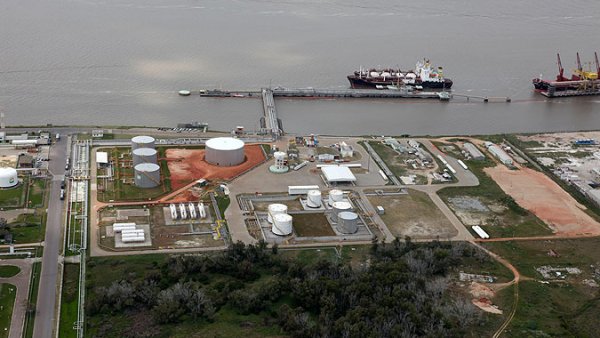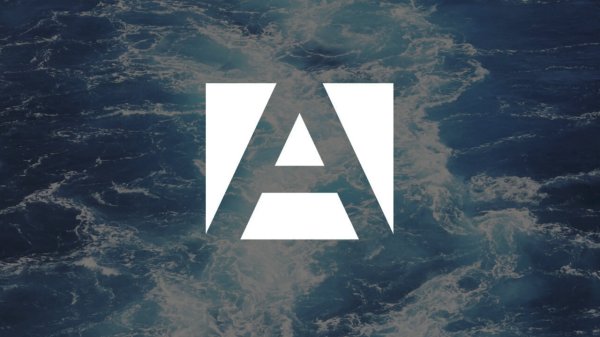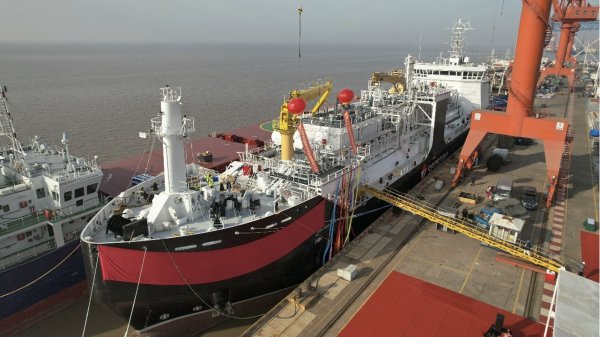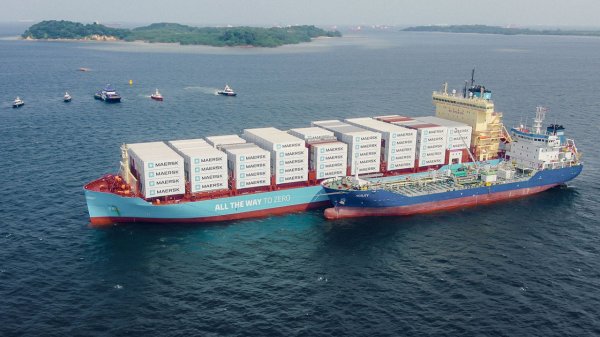Green Corridor project develops LNG-fuelled Newcastlemax design
Vessel designed as part of project to develop LNG-fuelled bulkers for a 'green corridor' between Australia and China.
Project partners BHP, Fortescue, Mitsui O.S.K. Lines (MOL), Rio Tinto, SDARI, U-Ming, Woodside, and DNV GL have presented the results from stage one of their 'Green Corridor' joint industry project (JIP), which, they say, demonstrates the commercial potential and technical feasibility of LNG-fuelled bulkers in a 'green corridor' transporting iron ore and coal between Australia and China.
The result is an LNG-fuelled Newcastlemax design, which is in the process of receiving approval in principle (AIP) from DNV GL.
China's SDARI developed the design of the 210,000-dwt Newcastlemax bulk carrier based on its fuel-efficient Green Dolphin design.
Dual-fuel engines are said to have been "quickly decided upon" by the JIP partners, as it is a mature technology with multiple suppliers offering solutions.
Based on fuel consumption analyses, an LNG fuel tank size of approximately 6,000 cubic metres was found to be optimal, with bunkering in Australia for the round trip to China.
Various locations for the LNG fuel tank were considered, but the optimal solution was said to be with the two LNG fuel tanks placed directly above the engine room and submerged a few metres below the main deck - thus offering protection for the fuel tanks, enhancing fire protection, and not reducing the cargo carrying capacity - even for volumetric cargoes such as coal.
Mike Utsler, Woodside Chief Operations Officer, explained: "An important part of the JIP was conducting the financial feasibility study for the design, we looked at a wide range of capital and operational costs, including LNG and low-sulfur fuel oil price sensitivities, as well as conducting a high-level bunker supply chain assessment. Based on this we found that, under the most realistic scenario, the payback period for the design was under 10 years, and under the optimistic projection just 6.7 years."
Morten Lovstad, DNV GL - Maritime Business Director Bulk Carriers, remarked: "This JIP has shown that by bringing together partners from across the industry to investigate alternative compliance options that account for market and trade route characteristics, such as safety and ease of operation, cargo and fuel flexibility, energy efficiency and economic viability, we can arrive at unique solutions that fulfil owners and operators' requirements, as well as being in full compliance with international rules and regulations.
"By having both charterers and ship owners as active partners in the JIP, we are also optimistic that this new design will materialize into firm orders in the near future."
Vessel details:
- Length overall: 300.0m
- Breadth: 50.0m
- Depth: 25.2m
- Scantling draught: 18.5m
- Deadweight at scantling draught: 210,000t
- Cargo holds volume: 225,000m3
- LNG tanks volume: 6,000m3
- Main engine: WINGD 6X72 DF MAN B&W 6G70ME-C9.5-GI
- Class notation: DNV GL, +A1 BULKCARRIER ESP BC-A GRAB[35] CSR, Holds 2, 4 ,6 and 8 may be empty, COAT-PSPC(B) GAS FUELLED
The result is an LNG-fuelled Newcastlemax design, which is in the process of receiving approval in principle (AIP) from DNV GL.
China's SDARI developed the design of the 210,000-dwt Newcastlemax bulk carrier based on its fuel-efficient Green Dolphin design.
Dual-fuel engines are said to have been "quickly decided upon" by the JIP partners, as it is a mature technology with multiple suppliers offering solutions.
Based on fuel consumption analyses, an LNG fuel tank size of approximately 6,000 cubic metres was found to be optimal, with bunkering in Australia for the round trip to China.
Various locations for the LNG fuel tank were considered, but the optimal solution was said to be with the two LNG fuel tanks placed directly above the engine room and submerged a few metres below the main deck - thus offering protection for the fuel tanks, enhancing fire protection, and not reducing the cargo carrying capacity - even for volumetric cargoes such as coal.
Mike Utsler, Woodside Chief Operations Officer, explained: "An important part of the JIP was conducting the financial feasibility study for the design, we looked at a wide range of capital and operational costs, including LNG and low-sulfur fuel oil price sensitivities, as well as conducting a high-level bunker supply chain assessment. Based on this we found that, under the most realistic scenario, the payback period for the design was under 10 years, and under the optimistic projection just 6.7 years."
Morten Lovstad, DNV GL - Maritime Business Director Bulk Carriers, remarked: "This JIP has shown that by bringing together partners from across the industry to investigate alternative compliance options that account for market and trade route characteristics, such as safety and ease of operation, cargo and fuel flexibility, energy efficiency and economic viability, we can arrive at unique solutions that fulfil owners and operators' requirements, as well as being in full compliance with international rules and regulations.
"By having both charterers and ship owners as active partners in the JIP, we are also optimistic that this new design will materialize into firm orders in the near future."
Vessel details:
- Length overall: 300.0m
- Breadth: 50.0m
- Depth: 25.2m
- Scantling draught: 18.5m
- Deadweight at scantling draught: 210,000t
- Cargo holds volume: 225,000m3
- LNG tanks volume: 6,000m3
- Main engine: WINGD 6X72 DF MAN B&W 6G70ME-C9.5-GI
- Class notation: DNV GL, +A1 BULKCARRIER ESP BC-A GRAB[35] CSR, Holds 2, 4 ,6 and 8 may be empty, COAT-PSPC(B) GAS FUELLED

|
VARO Energy expands renewable portfolio with Preem acquisition
All-cash transaction expected to complete in the latter half of 2025. |
|
|
|
||

|
NYK trials biofuel in milestone coal carrier test
Vessel is used to test biofuel for domestic utility company. |
|
|
|
||

|
H-Line Shipping orders LNG bunkering vessel
Vessel with 18,000-cbm capacity to run on both LNG and MDO. |
|
|
|
||

|
How to engineer and manage green shipping fuels | Stanley George, VPS
Effective management strategies and insights for evolving fuel use. |
|
|
|
||

|
Swedish government bans scrubber wastewater discharges
Discharges from open-loop scrubbers to be prohibited in Swedish waters from July 2025. |
|
|
|
||

|
MAN Energy Solutions achieves 100% load milestone for ammonia engine
Latest tests validate fuel injection system throughout the entire load curve. |
|
|
|
||

|
Petrobras secures ISCC EU RED certification for B24 biofuel blend at Rio Grande
Blend consisting of 24% FAME is said to have been rigorously tested to meet international standards. |
|
|
|
||

|
Stolt-Nielsen to fully control Avenir LNG with acquisition
Share purchase agreement to buy all shares from Golar LNG and Aequitas. |
|
|
|
||

|
Bureau Veritas supports launch of CIMC SOE's LNG bunkering vessel
Handover of Seaspan Energy's cutting-edge 7,600-cbm vessel completed. |
|
|
|
||

|
Methanol as a marine fuel | Steve Bee, VPS
How environmental legislation has driven the development of low-sulphur fuels and methanol-ready ships. |
|
|
|
||
Related Links
- · Strict regs will put short-term compliance methods into the 'too hard' basket: Purio [Insights]
- · New supply chain development sees first LNG STS transfer in the Philippines [Insights]
- · Woodside plans LNG bunker hub in Pilbara [Insights]
- · First LNG bunker delivery completed in Fremantle [Insights]
- · Western Australia 'well placed' to support LNG-fuelled bulk trade [Insights]
- · Joint study to look into developing LNG-fuelled Capesize bulker [Insights]
- · Australia [Directory]
- · China [Directory]

